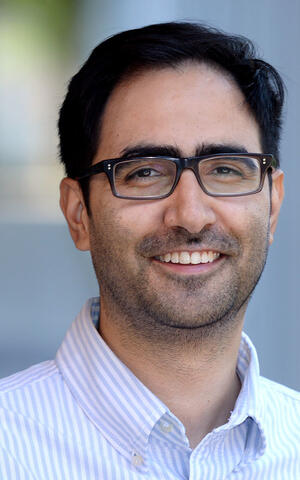Reaping the rewards of data acquisition
For the past four years, Altuna Akalin has been running a special summer school – word of which has now travelled as far as Canada and the United States. The head of the Bioinformatics Technology Platform at the MDC’s Berlin Institute for Medical Systems Biology (BIMSB) tells us in an interview why his training initiative has been so well received.
For the past four years, Dr. Altuna Akalin has been running "The Computational Genomics Summer School" at the MDC.
The demand for spots in your courses is high. What makes computer-based data analysis so exciting?
Researchers working in laboratories today produce huge amounts of raw information with modern sequencing equipment, but are often unable to analyze this data themselves. Generally, a young researcher’s university education will have focused more on the theory behind chemistry or biology. But acquiring data is only half the fun. Anyone who puts a lot of effort into creating large data sets in the lab will also want to reap the rewards of these efforts. And yet far more data exists than people who know how to analyze it.
What methods do you teach and what are their uses?
Every year we focus on something different. This year, the focus was on bisulfite sequencing – a very new method that is starting to be used more and more. Bisulfite sequencing is used to detect chemical modifications in deoxyribonucleic acid (DNA), and can also show us how genes are regulated.
Who participates in your courses?
Mostly postdoc and PhD students – roughly half of which do laboratory work and half conduct computer-based research. We select participants according to their existing programming knowledge, as anyone who doesn’t have previous programming experience will not get much out of the course.
Do you already have plans for next year?
Yes, next year we will be focusing on RNA and ChIP sequencing. Although these DNA analysis methods are certainly not new, they are the most frequently used in genomics and therefore remain important. RNA sequencing is used to measure gene expression and ChIP sequencing allows researchers to detect the points at which proteins interact with DNA.
Do you personally also benefit from the summer school?
Absolutely. We learn a lot from the researchers we invite to participate as teachers – this way we, too, keep up to date with the latest methods.
Further Information






